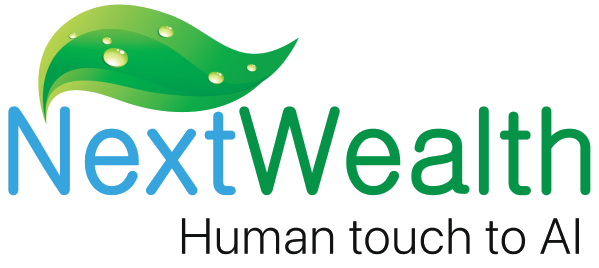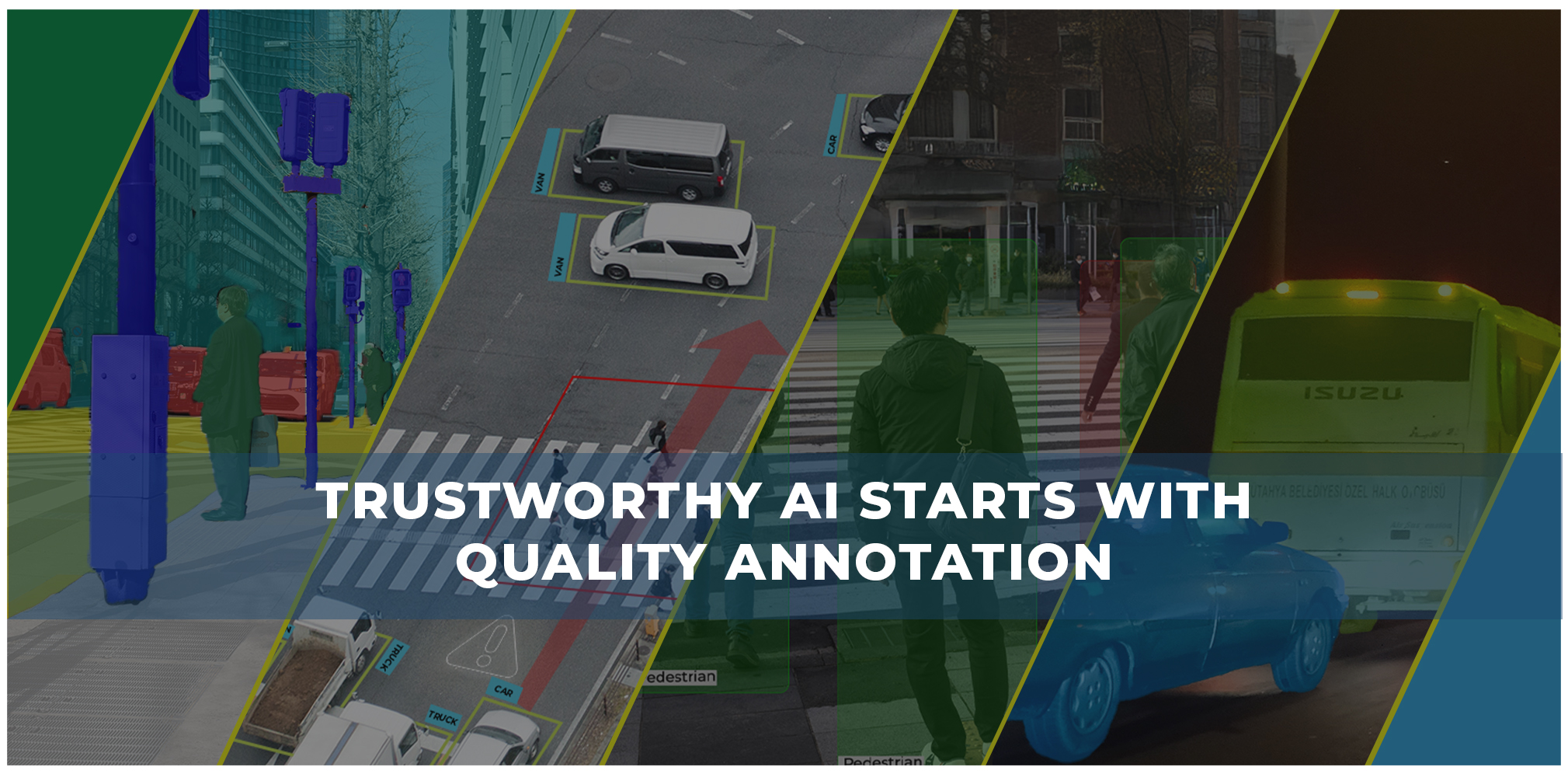Quick Overview
This blog explores the vital role of annotation in developing trustworthy AI systems, highlighting how high-quality data annotation forms the foundation for AI reliability, fairness, and performance, particularly in complex industries such as autonomous driving, healthcare, and smart city surveillance
Key points include:
- The importance of high-quality annotation for model reliability and accuracy.
- How HITL workflows combine AI efficiency with human oversight to solve complex scenarios.
- The role of domain experts in enhancing annotation accuracy.
- Best practices for building scalable, reliable annotation systems that drive trustworthy AI.
Introduction:
The future of AI will not be defined by algorithms alone, but by the quality of the data that shapes them. In the enterprise AI era, annotation is the cornerstone that is transforming raw visuals into intelligence that delivers trust, fairness, and performance at scale.!!
The Critical Role of Annotation in Trustworthy AI
The rapid evolution of Artificial Intelligence (AI) and Computer Vision has made annotation a cornerstone of modern technology. From self-driving cars and precision healthcare to e-commerce personalization and smart city surveillance, high-quality annotated datasets are the invisible engines powering reliable AI systems.
In 2025, the stakes are higher than ever. With enterprises deploying AI at scale, model reliability, fairness, and trustworthiness hinge on the quality of training data. The process of labelling visual data so machines can recognize, interpret, and act on it; directly determines the accuracy of models in real-world environments.
Yet, despite advances in automation, AI alone cannot guarantee annotation accuracy. Complex scenarios, cultural context, and edge cases still demand human judgment. This is where Human-in-the-Loop (HITL) workflows become the gold standard, combining AI efficiency with human oversight to deliver consistent, domain-aware results.
The Current Industry Landscape
- Autonomous Vehicles: OEMs and Tier-1s are shifting from 2D to 3D annotation, multi-sensor fusion, and semantic segmentation to train perception systems.
- Healthcare: Medical imaging AI relies on expert-driven annotations for tumour’s, anomalies, and organ structures, where precision can be life-critical.
- Retail & E-Commerce: Bounding boxes and segmentation help power checkout-free shopping, product recognition, and visual search.
- Smart Cities & Surveillance: Annotation of raw visuals into intelligence fuels real-time situational awareness, from traffic flow optimization to license plate recognition, enabling safer and more responsive urban environments.
Across industries, organizations are realizing that annotation isn’t just about labelling data. It is about building trustworthy AI systems.
Annotation Challenges That Make or Break AI
Annotation may be essential, but the hurdles it carries often determine whether AI projects succeed or stumble:
- Annotation Consistency: Large-scale projects often suffer from inconsistent labels across annotators, affecting model training.
- Complex Visual Scenarios: Real-world data rarely comes clean—occlusions, overlaps, and low-quality imagery demand nuanced judgment that automation alone cannot provide.
- Scalability & Cost: Managing millions of data points across distributed teams isn’t just resource-intensive. Hence, it requires disciplined workflows to balance speed, quality, and cost at scale.
- Domain Expertise Needs: Specialized projects (e.g., medical, industrial, agricultural) demand subject matter experts who understand nuances that general annotators may miss.
- Tooling Limitations: Not all annotation platforms support advanced needs like 3D LiDAR, polygon segmentation, or video frame interpolation.
Choosing the Right Annotation Technique for the Right Outcome
Different AI applications demand different annotation methods. The main techniques include:
- Bounding Boxes: The most widely used method, boxing objects into rectangular regions. Simple yet powerful, it fuels applications like retail product detection, surveillance monitoring, and other core recognition tasks.
- Polygons & Segmentation Masks: When precision matters, polygons capture irregular boundaries & roads, garments, or medical tissues with pixel-level accuracy, critical for domains where detail defines outcomes.
- Landmarks & Key-points: By tagging specific points on objects (like facial features or body joints), this technique drives advanced use cases in biometrics, gesture control, and human pose estimation.
- Semantic Segmentation: Every pixel is classified into a category, giving AI full scene understanding; essential for autonomous navigation and urban mapping
- Instance Segmentation: Goes a step further by distinguishing between individual objects of the same type, enabling nuanced decision-making (e.g., identifying multiple pedestrians in a crowded street).
- 3D Annotation: The backbone of autonomous driving and robotics, using LiDAR point clouds and depth data to create spatially aware models that can safely interact with complex environments.
The choice of technique is guided by application requirements, annotation cost, and desired model precision.
The Human-in-the-Loop (HITL) Advantage
Despite advances in AI-assisted labelling, automation alone struggles with ambiguity. For example:
- A pedestrian partially hidden behind a car.
- A rare medical anomaly with subtle features.
- A traffic sign covered with graffiti.
HITL workflows solve these problems by embedding human expertise at every stage:
- AI-Assisted Pre-Labelling: Models handle repetitive labelling tasks at scale.
- Human Review & Refinement: Annotators correct errors, resolve edge cases, and add context.
- Expert Validation: Domain specialists validate sensitive or high-impact datasets (e.g., medical imaging).
- Continuous Feedback Loop: Human corrections feed back into AI systems, making models smarter over time.
The result is a virtuous cycle of automation and human oversight that balances speed, scalability, and accuracy.
Raising the Bar: Best Practices for Reliable Annotation
To achieve consistent, enterprise-grade datasets, organizations must go beyond process checklists and embrace principles that institutionalize quality:
- Clarity through Guidelines
Reliable annotation begins with precision in instructions. Detailed guidelines, enriched with visual examples, and standardized label definitions eliminate subjective interpretation and align annotators toward a single source of truth.
- Multi-Layered Quality Assurance
Quality isn’t a single step it is a layered process. Peer reviews, sample audits, and inter-annotator agreement checks must work in tandem with automated QC to detect overlaps, omissions, and anomalies before they erode model reliability.
- Human + AI Synergy
Efficiency comes from AI-assisted pre-labelling, but trust is earned through human oversight. A blended workflow ensures edge cases are handled with judgment while automation scales the routine, delivering both speed and accuracy
- Scalability & Workflow Management
True scalability isn’t just about adding annotators it is about orchestrating workflows. By integrating project management frameworks, organizations can balance throughput with cost while keeping errors, timelines, and KPIs under disciplined control.
- Governance through Versioning
Annotation is never static. Version-controlled datasets create an auditable trail for compliance and enable iterative improvements, ensuring models evolve with changing business needs and data environments.
NextWealth’s HITL Annotation Workflow
At NextWealth, HITL is not an afterthought; it is the foundation of our annotation process. Our workflow integrates automation and human expertise at multiple checkpoints to guarantee accuracy, security, and scalability:
- Multi-Layer QA: AI-powered tagging, peer reviews, domain-expert validation, and final audits.
- Cross-Industry Scalability: Healthcare imaging, autonomous driving, retail vision, smart cities, and more.
- Security & Compliance: ISO 27001-certified infrastructure ensures sensitive data is handled with the highest standards.
- Flexible Engagement Models: From project-based delivery to FTE models, we adapt to client requirements while maintaining SLA-driven outcomes.
By combining technology with human intelligence, we help enterprises deploy AI solutions that are reliable, ethical, and future-ready.
Industry Trends Shaping the Future of Annotation
Looking ahead, several trends are reshaping annotation strategies:
- Synthetic Data Generation: Augmenting real-world data with simulated environments to reduce annotation costs.
- Active Learning: Models flagging uncertain cases for human review, minimizing annotation volume while maximizing quality.
- Edge-Case Prioritization: Increasing focus on annotating rare but critical scenarios (e.g., emergency vehicles, rare medical anomalies).
- Ethical Annotation Practices: Bias mitigation, cultural context awareness, and transparent labelling processes.
- HITL at Scale: Enterprise-wide adoption of layered HITL models as the industry standard for balancing accuracy with efficiency.
Conclusion: Building Trustworthy AI Through Quality Annotation
High-performing AI isn’t built in labs; it is built on the foundation of quality annotated data. Annotation may work behind the scenes, but it plays a starring role in making AI accurate, scalable, and trustworthy.
With HITL-driven workflows, enterprises can overcome annotation challenges, scale with confidence, and deliver AI that performs in the real world. At NextWealth, we champion a quality-first, ethically grounded approach to annotation transforming raw data into intelligence that drives trust and impact across industries.

